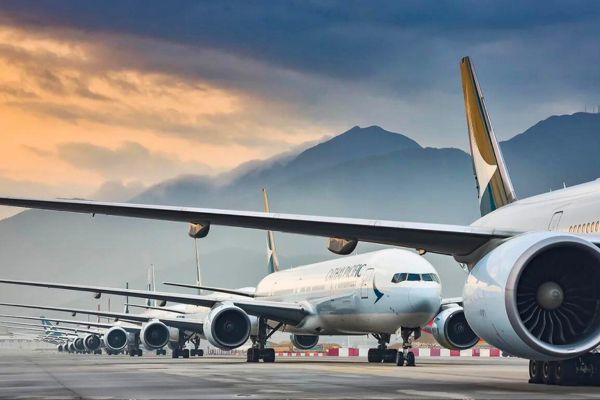Five U.S. airports have emerged as growth leaders, recording remarkable increases in passenger traffic over the past two years. As the aviation industry rebounds from the COVID-19 pandemic, airports like Los Angeles International (LAX) and Orlando International (MCO) are redefining travel trends, showcasing resilience and innovation in a changing world.
Los Angeles International Airport (LAX) has been a clear standout. Passenger traffic skyrocketed by 26.7% from 2022 to 2023, reaching 40.9 million travelers. This incredible growth makes it the fastest-recovering major airport in the country. LAX’s position as a hub for three major legacy airlines—United, Delta, and American—has solidified its status as a key West Coast gateway. The airport now rivals Atlanta Hartsfield-Jackson, the nation’s busiest, in total passenger traffic.
Orlando International Airport (MCO) tells a different but equally inspiring story. Catering primarily to leisure travelers, MCO has seen a 14.6% rise in passenger numbers, climbing to 28 million in 2023. The surge in tourism and the rise of budget carriers like Breeze Airways have fueled this growth, positioning Orlando as Florida’s busiest international airport.
Adapting to new travel trends
Shifting travel habits have played a crucial role in the aviation industry’s rebound. Remote work has enabled more off-peak vacations, while business travelers are flying on altered schedules. Airlines have responded by reconfiguring their networks to meet these new demands.
San Francisco International Airport (SFO), for example, saw an 18.5% jump in passenger traffic, with 24.1 million travelers passing through in 2023. United Airlines, the dominant carrier at SFO, has aggressively expanded its route offerings, driving the airport’s recovery. Similar double-digit growth was seen at United hubs in Denver and Newark, further cementing the airline’s competitive stance.
Nashville International Airport (BNA) and Raleigh-Durham International Airport (RDU) have also emerged as regional success stories. Nashville’s passenger numbers rose 14.2%, boosted by its appeal as a weekend destination and the introduction of new international routes like Aer Lingus’ Dublin service. Meanwhile, RDU achieved an impressive 21.7% increase, with Delta and American Airlines competing for dominance and offering nonstop flights to global destinations like London and Cancun.
The growth of these airports highlights the resilience and adaptability of the aviation industry. From leisure hubs like Orlando to major international gateways like LAX, airports have not only recovered but are thriving in a transformed travel landscape. With expansion projects underway and airlines continuing to innovate, the sky truly seems to be the limit for these high-performing facilities.
The recovery of U.S. air travel has been nothing short of extraordinary. After years of pandemic-related disruptions, airports are finally seeing numbers soar past pre-COVID levels. This resurgence is not just about travelers returning but also about how airports and airlines have adapted to new demands.
Read more on Major airlines suspend flights amid escalating Middle East tensions








![Nissan GT-R [Source autoevolution]](https://autojournal.africa/wp-content/uploads/2025/08/Nissan-GT-R-Source-autoevolution-350x250.png)












